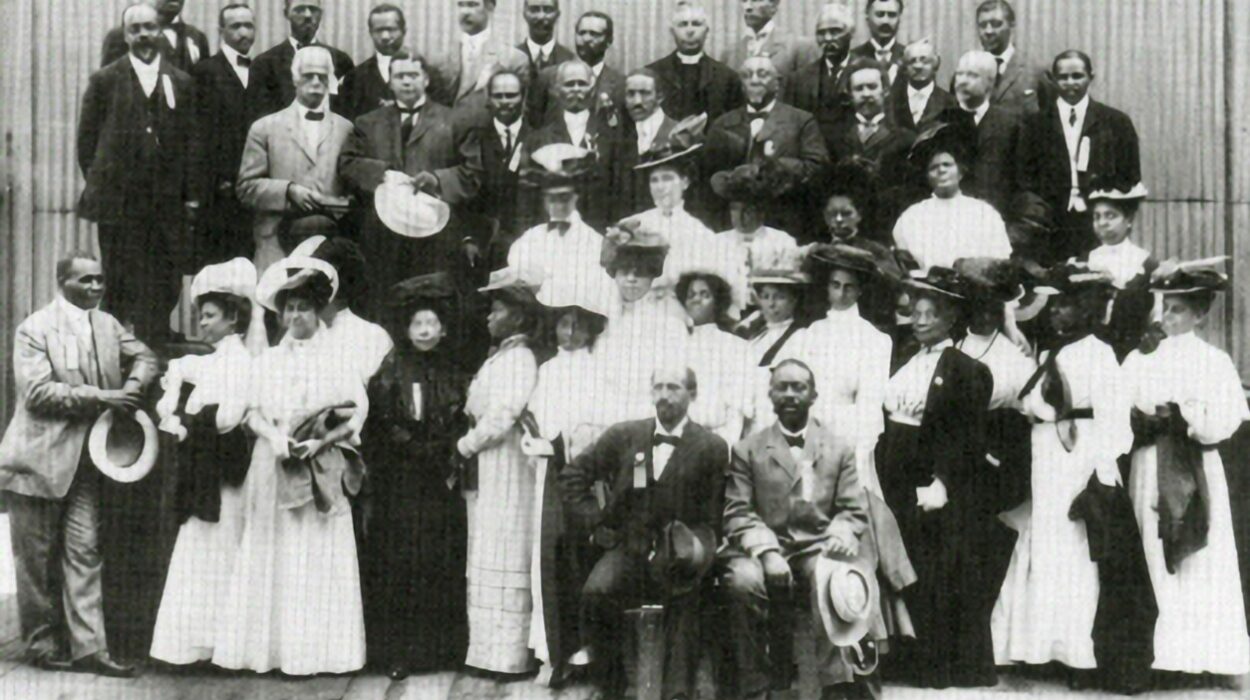The Niagara Movement, founded in 1905, pioneered the early 20th-century fight for African American civil rights. It set forth a bold and uncompromising vision for equality, advocating for African Americans’ full political, civil, and social rights. This movement stood in stark contrast to the more conciliatory approaches of the time, notably those endorsed by Booker T. Washington, thereby highlighting its unique and significant role in the civil rights movement.
The Niagara Movement’s core principles were clear and unwavering. It championed full civil rights, uncompromising in its belief that equality should neither be compromised nor postponed. The members of the Niagara Movement were not passive observers, but rather, they were committed to direct action. They rejected Washington’s philosophy of accommodation and pursued a proactive stance, confronting racial segregation and disenfranchisement head-on through protests, legal battles, and educational initiatives, thereby underscoring their determination and commitment to effect change.
A central tenet of the Niagara Movement was its reliance on legal challenges to dismantle discriminatory practices. The movement’s leaders understood that the courts could serve as a powerful instrument of change, providing a pathway to overturn unjust laws and policies. Education was another cornerstone of their strategy. The Niagara Movement emphasized the importance of educating African Americans, positing that an informed and enlightened populace would be better equipped to advocate for their rights and freedoms.
In addition to its legal and educational efforts, the Niagara Movement sought to unify African Americans from various backgrounds and regions. The founders believed that collective action was essential for making meaningful progress. The very name “Niagara Movement” was chosen to symbolize the “mighty current” of change they aimed to create, evoking the mighty and unstoppable force of Niagara Falls.
While the movement was relatively short-lived, existing from 1905 to 1909, its impact was profound and far-reaching. One of its most significant contributions paved the way for establishing the National Association for the Advancement of Colored People (NAACP) in 1909. Many former members of the Niagara Movement, including the influential W. E. B. Du Bois played a pivotal role in founding the NAACP. This demonstrates the lasting influence of the Niagara Movement, as the NAACP would go on to become one of the most enduring and influential civil rights organizations in American history.
The Niagara Movement’s emphasis on legal strategies laid the groundwork for the NAACP’s later successes in court. Landmark cases such as Brown v. Board of Education were rooted in the legal principles first championed by the Niagara Movement. Furthermore, the movement inspired a new generation of activists, instilling in them a commitment to direct action, education, and unity that would resonate through the civil rights struggles of the mid-20th century.
Despite its significant contributions, the Niagara Movement faced formidable challenges. Its limited membership and financial constraints hampered its ability to sustain long-term initiatives. The movement also faced resistance from established African American leaders who preferred a more gradualist approach to achieving equality. Additionally, it encountered hostile public opinion and numerous legal and political barriers, making its mission an uphill battle.
Internal disagreements occasionally disrupted the movement’s cohesion, and its geographical limitations—primarily operating in the Northeastern United States—restricted its reach. Ultimately, the movement’s brief existence curtailed its ability to achieve lasting change within its lifetime.
However, the Niagara Movement’s legacy endures. Its principles and goals continued to shape the trajectory of the civil rights movement, providing a foundation for future progress and inspiring generations of activists committed to the ongoing fight for equality. The movement’s insistence on full civil rights, legal challenges, and direct action left an indelible mark on American civil rights history, reminding us that the quest for justice is often initiated by those willing to challenge the status quo.
Here is a short list of organizations that support racial equality and work towards eliminating discrimination:
NAACP (National Association for the Advancement of Colored People): Founded in 1909, the NAACP is the largest civil rights organization in the United States. It aims to secure political, educational, social, and economic rights for Black people and eliminate race-based discrimination.
Black Youth Project (BYP): BYP examines Black millennials’ attitudes, resources, and culture. They conduct research, share knowledge, and take action on issues related to health, sex, politics, racial injustice, LGBTQIA+ matters, and feminism.
Las Americas Immigrant Advocacy Center: This nonprofit organization serves the legal needs of low-income immigrants who cannot afford legal aid. They provide legal care to immigrants in Texas and New Mexico, assisting with asylum and general immigration relief.
American Civil Liberties Union (ACLU): The ACLU ensures constitutional freedoms for all genders, races, and sexual orientations. Through lobbying and legal action, it addresses issues like free speech, human rights, racial injustice, and criminal justice.
These organizations actively promote racial equality and social justice. Visit their websites for ways to volunteer or donate!
Sources: history.com, britannica.com, en.wikipedia.org, verywellmind.com, blacknews.com, naacp.org, kahnacademy.org,
